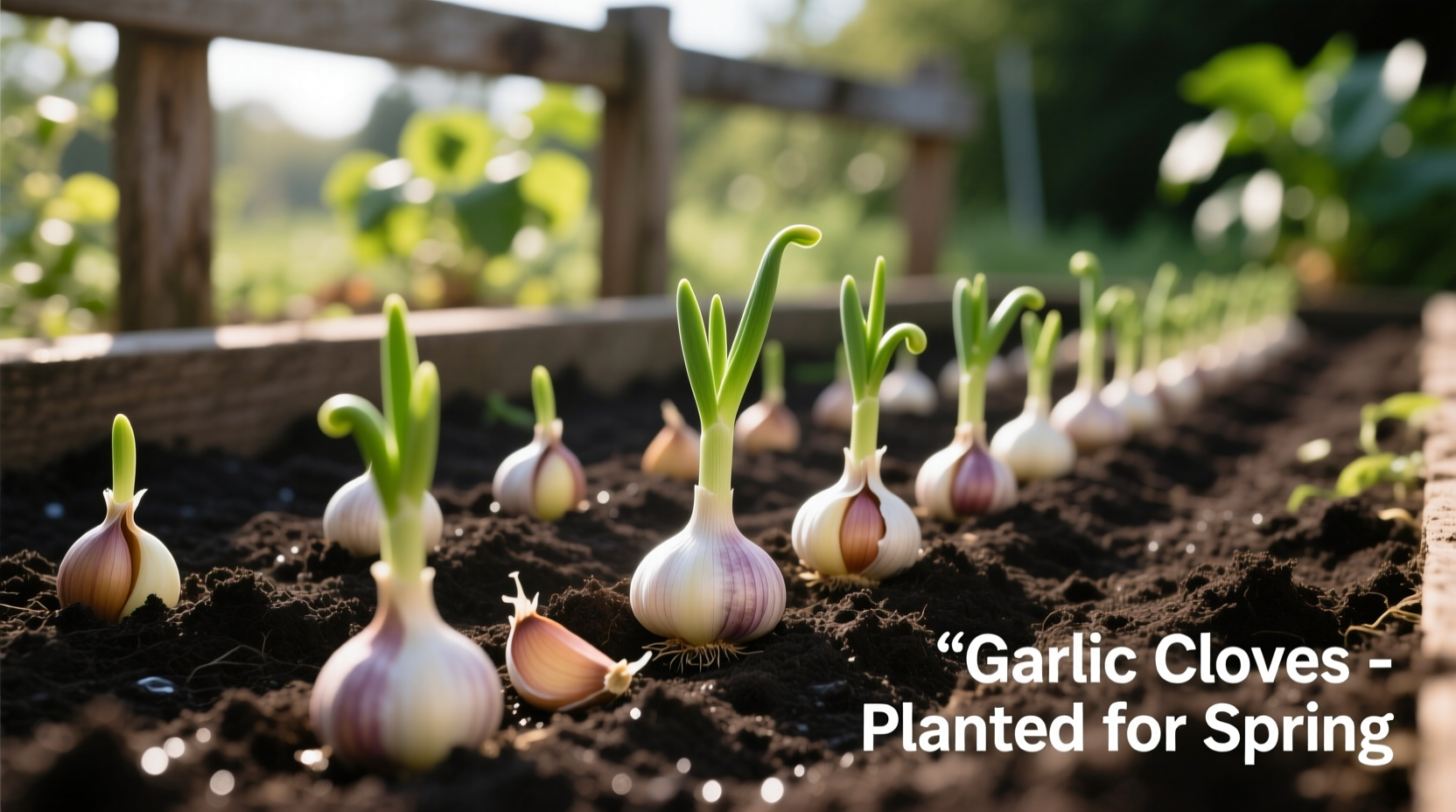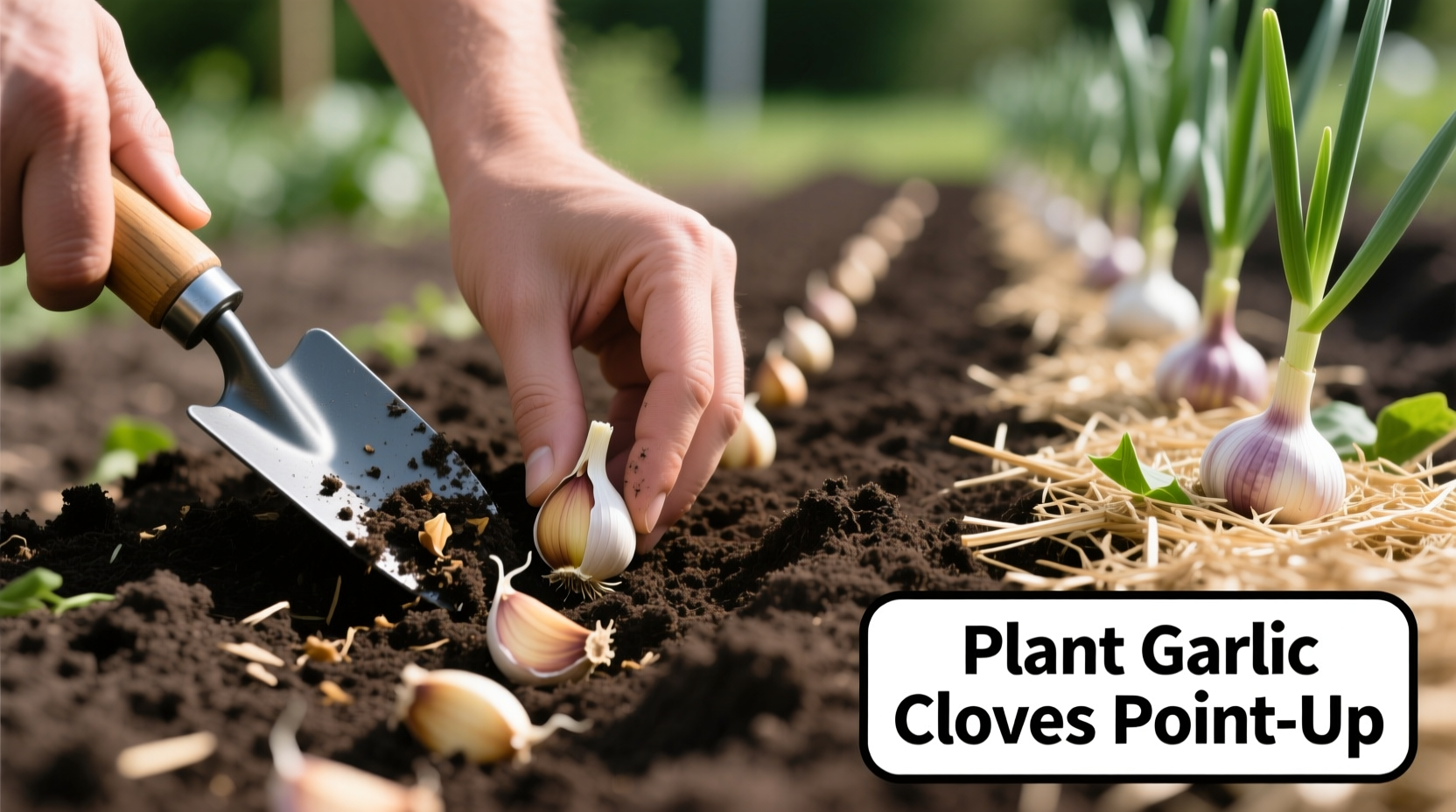Discover exactly how to plant garlic successfully with this comprehensive, science-backed guide. Whether you're a first-time gardener or looking to improve your harvest, you'll learn the precise timing, soil preparation methods, and care techniques that lead to plump, flavorful bulbs. We've distilled decades of horticultural research into actionable steps that work in any climate zone.
Why Fall Planting Yields Superior Garlic
Contrary to popular belief, fall planting produces larger, more flavorful garlic than spring planting. When cloves experience 4-8 weeks of temperatures below 40°F (4°C), they initiate proper bulb formation through vernalization. University of Minnesota Extension research confirms fall-planted garlic develops stronger root systems before winter, resulting in 30-50% larger bulbs at harvest.
| Garlic Type | Best Climate Zones | Flavor Profile | Bulb Size | Storage Life |
|---|---|---|---|---|
| Hardneck | 3-7 (cold winters) | Strong, complex | Medium | 5-7 months |
| Softneck | 6-10 (mild winters) | Milder, consistent | Large | 9-12 months |
Step 1: Selecting and Preparing Quality Cloves
Never use grocery store garlic for planting—most is treated to prevent sprouting. Instead, source certified disease-free cloves from reputable seed suppliers like USDA-certified growers. Select the largest, healthiest cloves from bulbs, keeping wrappers intact. Separate cloves 24-48 hours before planting to stimulate root growth while preventing premature drying.
Step 2: Perfecting Your Soil Conditions
Garlic thrives in loose, well-draining soil rich in organic matter. Conduct a soil test through your local land-grant university extension to determine exact pH and nutrient needs. Amend soil with 3-4 inches of compost and 10-10-10 fertilizer two weeks before planting. Raised beds 6-12 inches high significantly improve drainage in heavy clay soils.
Step 3: The Critical Planting Process
Plant cloves with the pointed end facing up, 2 inches deep in heavy soils or 3 inches deep in sandy soils. Space cloves 4-6 inches apart in rows 12-18 inches apart. After planting, water thoroughly to eliminate air pockets. Immediately apply 4-6 inches of organic mulch (straw or shredded leaves) to maintain consistent soil temperature and moisture.

Seasonal Care Timeline for Maximum Yield
Follow this proven seasonal schedule to ensure healthy growth:
- Fall (Planting to First Frost): Water weekly if rainfall is less than 1 inch. Apply mulch after soil cools to 50°F
- Winter: Maintain mulch layer; no additional care needed
- Early Spring: Remove mulch when shoots emerge; side-dress with nitrogen fertilizer
- Late Spring: Water 1 inch weekly; remove scapes from hardneck varieties
- Summer (Harvest Time): Stop watering when lower leaves yellow
Climate-Specific Planting Considerations
Your geographic location dramatically affects garlic planting success:
- Northern Zones (3-5): Plant September-October, 3 inches deep, heavy mulch
- Mid-Latitude Zones (6-7): Plant October-November, 2 inches deep, moderate mulch
- Southern Zones (8-10): Plant December-January, 1-2 inches deep, light mulch
According to Cornell University's horticultural research, southern growers achieve best results with softneck varieties and pre-chilling cloves in the refrigerator for 4-6 weeks before planting.
Harvesting and Curing for Long-Term Storage
Harvest when 40% of leaves have turned brown but 60% remain green—typically late June to August depending on planting date. Carefully dig bulbs with a garden fork, avoiding bruising. Cure bulbs in a shaded, well-ventilated area for 2-3 weeks until necks are dry and papery. Store cured bulbs at 55-65°F with 60-70% humidity for optimal shelf life.
Troubleshooting Common Garlic Growing Problems
Small bulbs: Usually caused by late planting, poor soil nutrition, or overcrowding. Plant earlier and test soil.
Moldy cloves: Indicates excessive moisture. Improve drainage and reduce watering frequency.
Yellowing leaves: Could signal nutrient deficiency or pest infestation. Conduct soil test and inspect for onion thrips.











 浙公网安备
33010002000092号
浙公网安备
33010002000092号 浙B2-20120091-4
浙B2-20120091-4